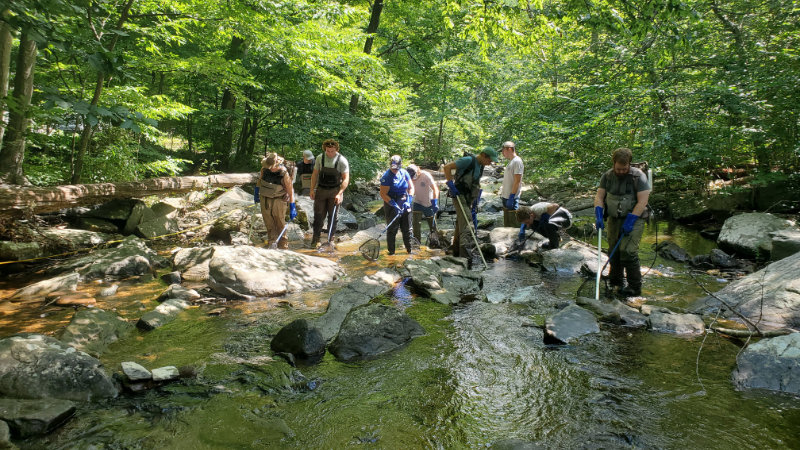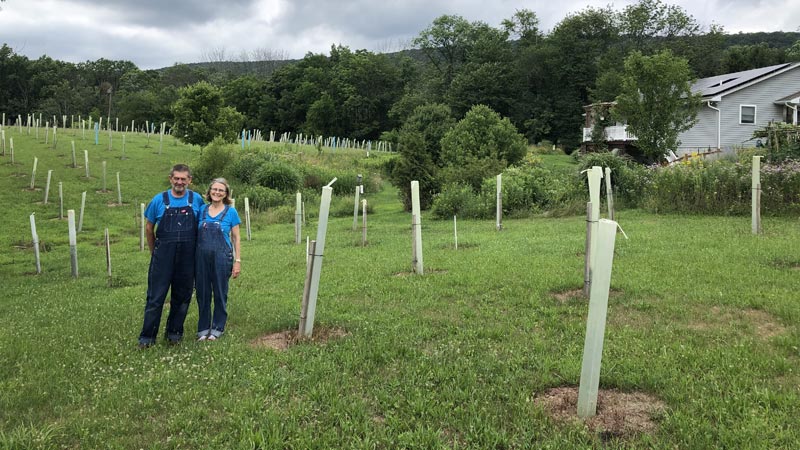Scientists, Educators, and Watershed Restoration Professionals Are Working Together to Create Long-Lasting and Positive Impacts on Waterways

By Giovina Leeds, Entomology Intern
An independent, nonprofit, non-advocacy organization, Stroud Water Research Center has a unique ability to positively influence local freshwater ecosystems in the Delaware and Chesapeake Bay watersheds and around the world.
The Stroud Center’s different research groups work together to understand stream health and improve water quality.
Jinjun Kan, Ph.D., principal investigator of the Microbiology Group at the Stroud Center explains, “Groups work together to understand broad ecological problems from different angles, providing a sharper picture of what’s happening when stream health declines. Not only are the Stroud Center’s scientists experts in their field; they are also capable communicators and collaborators.”

The Stroud Center is able to influence stream health due in part to its communication between teams. Scott Ensign, Ph.D., vice president, assistant director, and research scientist, states, “The connection between the different research groups here and their connection to the Stroud Center’s watershed restoration team allows the application of science at real scale.”
Experiments at the Stroud Center are not just test beds. They are applied on land through landowner and farmer partnerships that allow for the collection of data after a restoration project is completed.
“You are innovating something in the real world and having an effect in the real world. This fast tracks innovation by moving more rapidly from test-bed science into a real-world application and where you find success in outcome,” says Ensign.
The idea of interdisciplinary studies is one of the founding ideas of the Stroud Center. Ensign says, “Combining multiple disciplines is the practice Dr. Ruth Patrick left us with.”
The Stroud Center’s watershed restoration projects exemplify this collaboration between disciplines perfectly. These projects focus on partnering with farmers to plant forest buffers, fence livestock out of streams, and implement other practices that protect streams. In the past, all groups at the Stroud Center have been involved. Currently in the Lancaster County sites, the groups involved are the Microbiology Group, Entomology Group, and Robin L. Vannote Watershed Restoration Program. As each group analyzes different indicators of stream health, teamwork between the groups is key.

As John Jackson, Ph.D., senior research scientist and principal investigator of the Entomology Group, states, “It was a one-of-a-kind organization, and still is.”
Other research centers such as universities do not have the advantages that the Stroud Center gains from its communication between its research groups.
Jackson says, “The thing that makes us so different in my mind is that by design we work as a team, and universities do not.” Jackson explains, “Universities hire individual principal investigators to address a wide variety of priorities, only one of which might be to join a research team. At the Stroud Center, joining the team is a top priority.”
Jackson adds, “Our combination of multiple disciplines also makes us more efficient.” The Stroud Center can work over multiple disciplines, which increases the number of avenues of funding the Stroud Center gets. This also means the Stroud Center must finish its projects, which further drives efficiency.
In addition to efficiency, the Stroud Center’s data sets have set it apart from other institutions as well.
Ensign says, “University research is limited by the duration of one person’s career. Whereas the Stroud Center has a multigenerational perspective and approach.” Because the Stroud Center has data from the 1970s that other facilities lack, it is unique in its ability to tell a story of environmental success — such as the restoration of a stream — that takes decades. Each new generation of Stroud Center researchers fills in more of the story.
As an entomology intern at the Stroud Center, I did not expect to be writing an article for the Marketing and Communications Department. As my career goal is to go into public health, it is important for me to understand the technical side of science as well as the marketing side. Marketing in public health translates important information that science has for the public into something understandable and actionable. I was able to have this opportunity due to the strong communication and collaboration that makes the Stroud Center unique.



